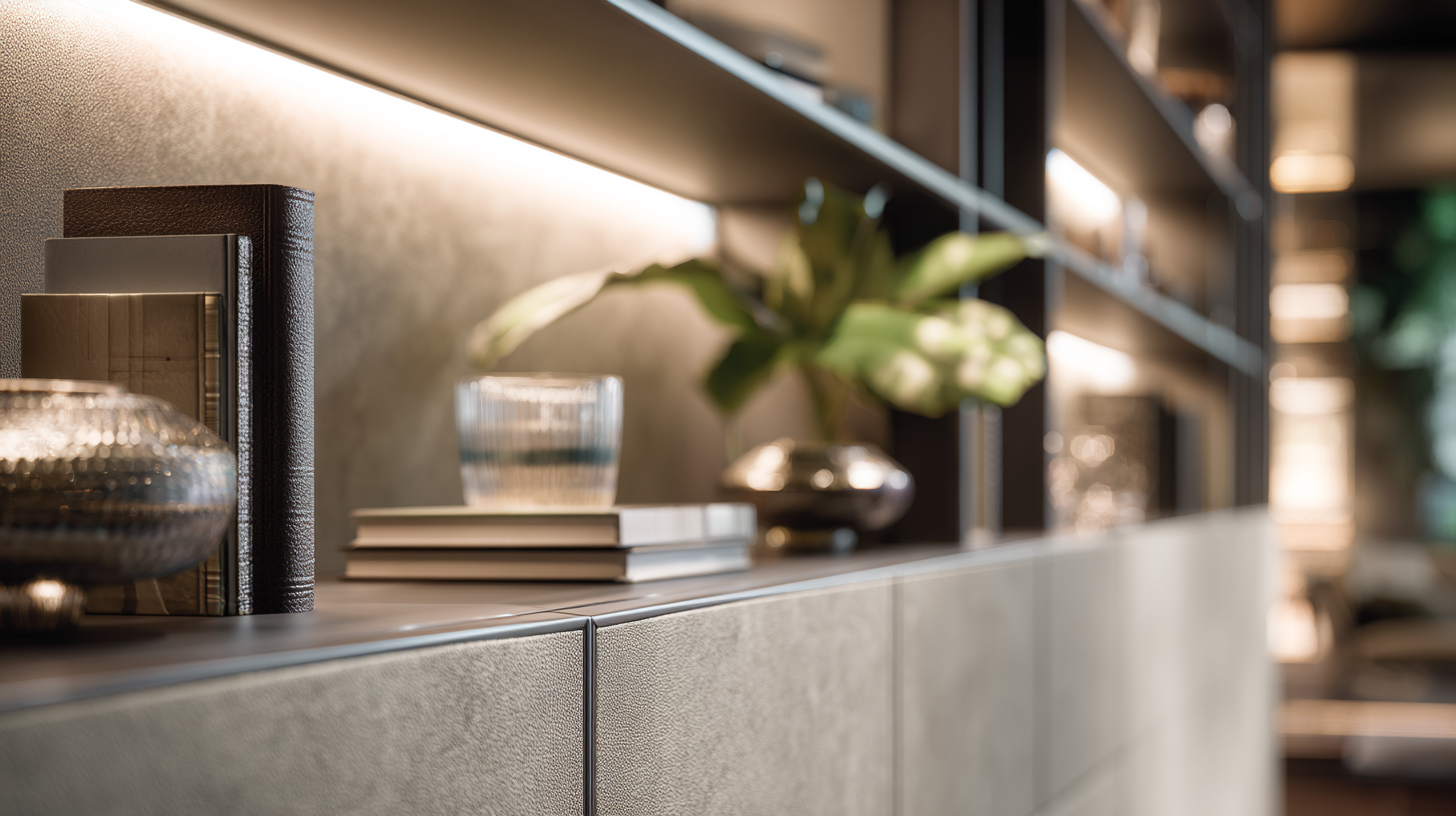 No. 14, Building 2, No. 367 Beijing Road, Chengdu Economic and Technological Development Zone (Longquanyi District)
No. 14, Building 2, No. 367 Beijing Road, Chengdu Economic and Technological Development Zone (Longquanyi District)

In the dynamic landscape of industrial applications, the demand for
high-performance MDI PU screen panels
has seen a significant increase, driven by the need for durability and efficiency in various processes. According to recent industry reports, the global market for polyurethane products is projected to reach $74.8 billion by 2027, with MDI (Methylene Diphenyl Diisocyanate) formulations leading the way due to their superior strength and flexibility. This rising trend highlights the importance of exploring alternative options that can meet diverse operational needs.
 In this blog, we will delve into the most effective choices available for MDI PU screen panels, backed by data and analyses from leading market studies, ensuring that you find the best solutions tailored to your specific requirements. Whether for industrial sieving, gravel processing, or wastewater treatment, understanding the range of options will empower you to make informed decisions that enhance productivity and performance.
In this blog, we will delve into the most effective choices available for MDI PU screen panels, backed by data and analyses from leading market studies, ensuring that you find the best solutions tailored to your specific requirements. Whether for industrial sieving, gravel processing, or wastewater treatment, understanding the range of options will empower you to make informed decisions that enhance productivity and performance.
 MDI PU (Methylene Diphenyl Diisocyanate Polyurethane) screen panels have emerged as a vital component in various industries due to their remarkable benefits. According to a recent report by MarketsandMarkets, the global polyurethane market is projected to grow from $62 billion in 2021 to $85 billion by 2026, underscoring the increasing demand for high-performance materials like MDI PU. These panels are not only lightweight but also exhibit superior chemical resistance and durability, making them ideal for applications in the mining, agriculture, and construction sectors.
MDI PU (Methylene Diphenyl Diisocyanate Polyurethane) screen panels have emerged as a vital component in various industries due to their remarkable benefits. According to a recent report by MarketsandMarkets, the global polyurethane market is projected to grow from $62 billion in 2021 to $85 billion by 2026, underscoring the increasing demand for high-performance materials like MDI PU. These panels are not only lightweight but also exhibit superior chemical resistance and durability, making them ideal for applications in the mining, agriculture, and construction sectors.
One of the key advantages of MDI PU screen panels is their ability to enhance operational efficiency. In mining, for instance, their high wear resistance reduces maintenance costs by 20-30%, as reported by the International Journal of Mining Science and Technology. Furthermore, their flexibility allows for customization, enabling industries to tailor the panels to specific requirements, thus improving overall productivity.
Tip: When selecting MDI PU screen panels, consider the specific environmental conditions they will be subjected to, such as temperature fluctuations and chemical exposure.
Additionally, the lightweight nature of these panels contributes to easier installation and reduced transportation costs, vital statistics for industries aiming to optimize logistics. Tip: Always ensure that your supplier offers panels that comply with industry standards to guarantee both performance and safety.
When it comes to screen panels, particularly in the context of emerging technologies like foldable displays, the choice of materials can significantly impact performance and user experience. As companies explore alternatives to traditional MDI PU screen panels, materials such as metal mesh and nano-silver are gaining attention. Metal mesh, known for its durability and lightweight properties, offers enhanced flexibility, making it an ideal candidate for foldable applications. However, the challenge lies in its manufacturing complexity and cost-effectiveness.
On the other hand, nano-silver emerges as a promising alternative with its potential for antimicrobial properties and superior conductivity. This makes it increasingly attractive for high-performance screens where clarity and responsiveness are paramount. Yet, like metal mesh, the scalability and production costs of nano-silver materials can pose hurdles. As innovation drives the industry forward, evaluating the pros and cons of these alternatives is crucial for manufacturers looking to meet the growing demands of a tech-savvy market.
This chart compares the pros and cons of different alternative materials used for screen panels, focusing on their price, durability, weight, and environmental impact.
When it comes to MDI PU screen panels, the shift towards innovative manufacturing techniques has revolutionized the market. These advancements not only enhance the durability of the panels but also cater to the specific needs of various industries, from mining to construction. Techniques such as advanced molding processes and the integration of nanomaterials have significantly improved resistance to wear and tear, extending the lifespan of the panels under challenging conditions.
Moreover, the incorporation of automation in the manufacturing process ensures that each panel maintains a high standard of quality. Automated systems allow for precise measurements and consistent production, minimizing defects and improving overall performance. Additionally, these innovations have led to the development of eco-friendly manufacturing practices, reducing waste and energy consumption. As industries seek sustainable solutions, the transition to more durable and reliable MDI PU screen panels through innovative techniques becomes an essential step toward meeting both functional and environmental goals.

When considering MDI PU screen panels, one significant factor to evaluate is their cost-effectiveness in comparison to traditional materials. Industry reports indicate that MDI PU panels can reduce maintenance costs by up to 20% due to their enhanced durability and resistance to wear. Traditional options often require frequent replacement, leading to higher long-term expenses for operations.

Moreover, the efficiency of screen media selection has a direct impact on production rates. Research shows that utilizing high-grade materials like MDI PU can improve aggregate processing efficiency by approximately 15%. This is crucial for industries where operational downtime can significantly affect profitability. By selecting advanced screen media, companies not only enhance their productivity but also ensure sustainable practices by reducing waste associated with frequent replacements.
In an era where operational costs and efficiency are paramount, exploring alternative options like MDI PU screen panels emerges as a smart investment for businesses striving for reliability and profitability in their operations.
The global market for MDI PU screen panels is experiencing remarkable growth as industries increasingly recognize their superior performance and versatility. According to a report by Research and Markets, the polyurethane market is projected to reach USD 102 billion by 2025, driven in part by innovations in material technology. MDI PU screen panels, known for their durability and lightweight properties, are revolutionizing various sectors, particularly in mining and construction, where efficiency and cost-effectiveness are paramount.
Moreover, the impact of MDI PU screen panels extends beyond domestic markets, influencing global trade dynamics. The latest industry analysis indicates that exports of MDI PU products have surged by 15% annually over the past three years. This surge can be attributed to their ability to withstand harsh environments, thereby enhancing their appeal in regions with extreme weather conditions. As companies seek to optimize operations and reduce maintenance costs, MDI PU screen panels are becoming the preferred choice, leading to a broader adoption across international markets. Their role in boosting export potential highlights the importance of adopting advanced materials in enhancing competitiveness on a global scale.